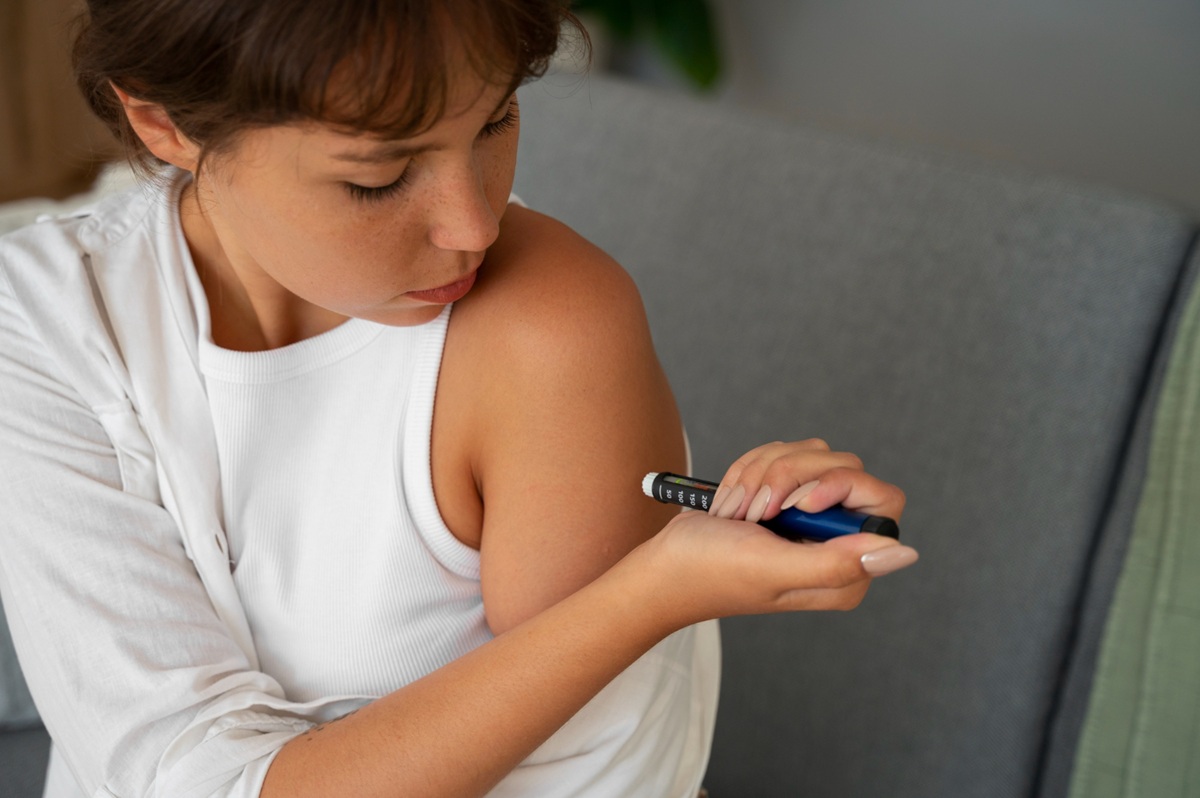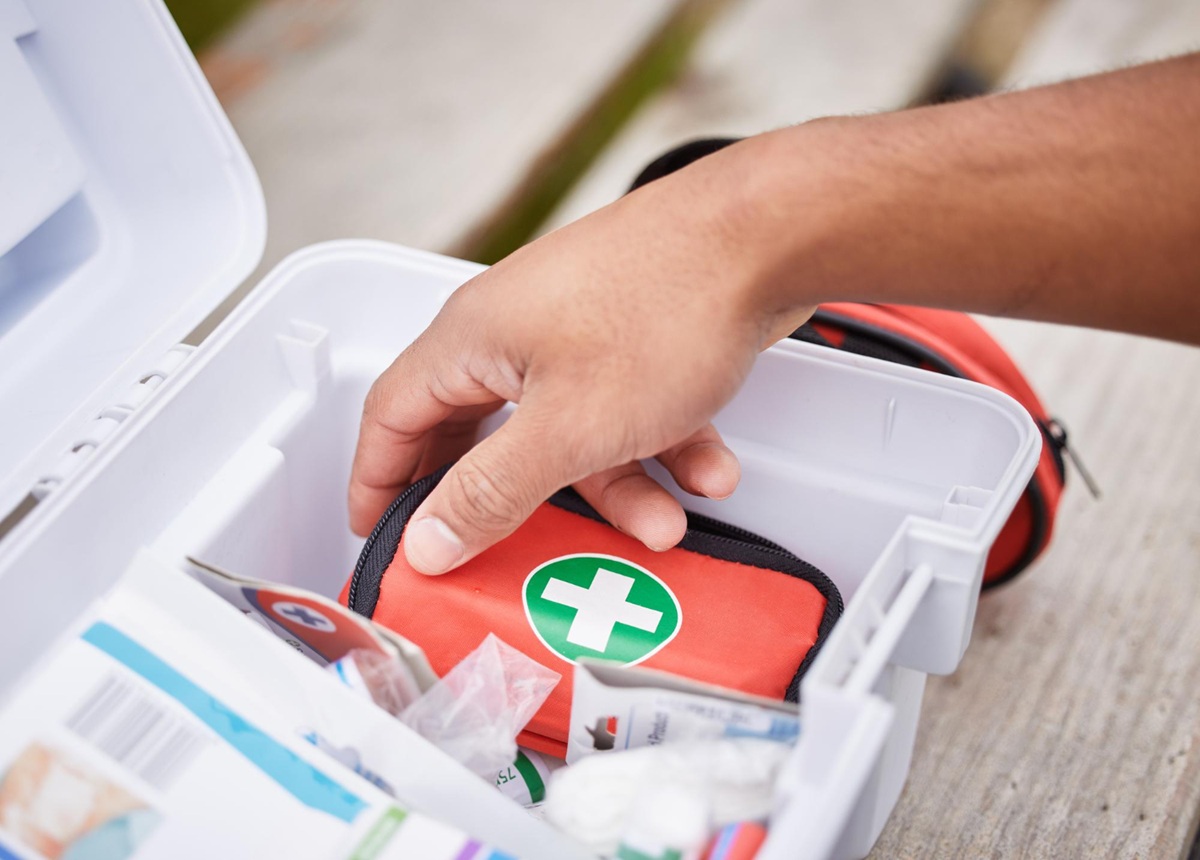J
Jason Hitch
Swimming is a valued part of physical education in Australia, not only for its health benefits but also for teaching vital life skills such as swimming proficiency and water safety awareness.However, water activities come with inherent risks that necessitate a comprehensive approach to safety, emergency preparedness and first aid knowledge.This month’s blog aims to explore the critical importance of first aid in swimming, particularly within Australian schools, and highlights the necessity of having the right medical and first aid supplies readily available to safeguard students' health during swimming activities.
Swimming comes with inherent risks, such as the possibility of drowning, slip and fall injuries, and various water-related accidents.The Australian Water Safety Council has highlighted a significant number of water-related incidents among children, emphasising the critical importance of vigilant supervision, comprehensive water safety education, and efficient emergency response measures.It is imperative for schools to prioritise first aid preparedness to ensure the safety and well-being of students during swimming activities.
National standards and guidelines mandate that schools implement comprehensive swimming and water safety programs in Australia.These swim safety programs are designed to equip students with the knowledge and skills they need to stay safe in and around water, including understanding the risks and how to respond in an emergency.
Swimming is not without its risks, especially in a school swimming environment where the range of abilities and the nature of group activities can increase the likelihood of injuries. Here are some common swimming-related injuries that can occur, along with strategies for addressing them:
Causes: Overexertion, dehydration, or insufficient warm-up.
How to Address: Cramps and strains should be treated with rest and gentle stretching. Hydration is crucial, as is ensuring a proper warm-up before swimming.
Causes: Rough pool surfaces, accidental collisions, or mishaps on pool decks.
How to Address: Clean the wound with gentle antiseptic, apply a sterile dressing if necessary, and monitor for signs of infection. Keep wounds covered in the pool to prevent infection.
Causes: Hitting the head on the pool bottom or sides, or colliding with other swimmers.
How to Address: Immediate medical evaluation is essential for any head injury. Monitor for symptoms like dizziness, confusion, or nausea, and follow a healthcare professional's advice for care and observation.
Causes: Prolonged exposure to the sun without adequate protection.
How to Address: Prevention is key, using water-resistant sunscreen and limiting exposure during peak sun hours. If sunburn occurs, soothe the skin with aloe vera or burn gel and stay hydrated.
Causes: Water remaining in the ear canal, creating a breeding ground for bacteria.
How to Address: Preventive measures include drying ears thoroughly after swimming. If an infection occurs, use Aqua Ear eardrops or a visit to a healthcare provider may be necessary.
Causes: Lack of swimming ability, unsupervised water access, or accidents.
How to Address: Immediate rescue and CPR if necessary, followed by medical evaluation. Ensuring constant supervision and teaching proper swimming techniques are critical preventive measures.
Prompt and proper first aid is essential for addressing common injuries related to swimming. Equally important is ensuring that the necessary supplies are readily available in a well-stocked first aid kit.
A well-stocked first aid kit is a cornerstone of effective swim safety. For school swimming environments, certain first aid supplies are required. These include antiseptic wipes, waterproof adhesive strips and waterproof dressings for treating minor cuts and abrasions, ice packs and sports tape for sprains and bruises, and resuscitation masks for performing CPR.Regular maintenance and restocking of school first aid kits ensure that schools are always prepared to respond to emergencies.Training school staff in first aid and life-saving techniques, including CPR, and recognising the signs of more severe conditions like hypothermia or heat exhaustion is essential to ensure they can confidently and effectively respond to these incidents.
The best strategy to address swimming injuries is through prevention and education. This includes:
Ensuring all students know the basic swimming and water safety skills.
Providing lifeguards or trained supervisors during swimming activities.
Enforcing rules for safe behaviour in and around the water.
Equipping the pool area with first aid supplies and emergency equipment.
By implementing these measures, schools can create a safer swimming environment that minimises the risk of injuries and enhances the benefits of swimming activities for students.
LFA First Response is committed to enhancing swim safety in schools through our specialised range of first aid kits and supplies, designed specifically for swimming pools and water activities. Our products cater to the unique needs of school swimming environments, ensuring that educators have access to high-quality, reliable first aid solutions. From waterproof dressings and bandages to comprehensive first aid kits equipped for any emergency, LFA First Response offers the tools necessary to maintain a safe and prepared swimming environment.
Our products cater to the unique needs of school swimming environments, ensuring that educators have access to high-quality, reliable first aid solutions. From waterproof dressings and bandages to comprehensive first aid kits equipped for any emergency, LFA First Response offers the tools necessary to maintain a safe and prepared swimming environment.
By prioritising first aid readiness, schools can create a safer swimming environment where students can enjoy the benefits of water activities while minimising the risks.We urge school administrators, physical education teachers, and swimming coaches to assess their current first aid preparedness for swimming activities. It's crucial to have the right supplies on hand and ensure that staff are adequately trained to deal with potential emergencies.Our friendly team at LFA First Response is here to provide expert advice and solutions tailored to meet the specific needs of your school's swimming program. We offer school first aid kits and sports first aid kids, and also customisable module first aid kits which can be stocked as per the requirements of your school.Contact us today if you have any questions, or if you would like to order first aid supplies for your swim school or school.

Australia is home to thousands of spider species, but only a few can cause serious harm. This guide explains how to recognise dangerous spider bites, what symptoms to watch for, and the correct first-aid techniques for funnel-web, redback, and white-tailed spiders. With clear steps on when to call 000, how to apply pressure immobilisation, and how to treat low-risk bites at home, it empowers you to respond calmly and effectively. You’ll also learn simple prevention tips, what to keep in you
J
Jason Hitch

Anaphylaxis can strike without warning and become life-threatening within minutes. Learn how to identify symptoms, administer adrenaline, call 000, and set up an anaphylaxis-ready first aid kit tailored for schools, workplaces, events, and remote areas. This guide walks you through prevention, emergency response, aftercare, and the essential gear every site should have.
J
Jason Hitch

In any school environment, accidents and medical incidents can happen without warning. Whether it’s a scraped knee on the playground, an allergic reaction in the lunchroom, or a sudden asthma attack during sport, having a well-stocked and compliant classroom first aid kit is essential.
J
Jason Hitch

Crush injuries are among the most serious workplace incidents, especially in high-risk environments like mines, construction sites, and industrial facilities. Whether caused by collapsing structures, heavy machinery, or vehicular accidents, crush injuries demand immediate and informed first aid.
J
Jason Hitch